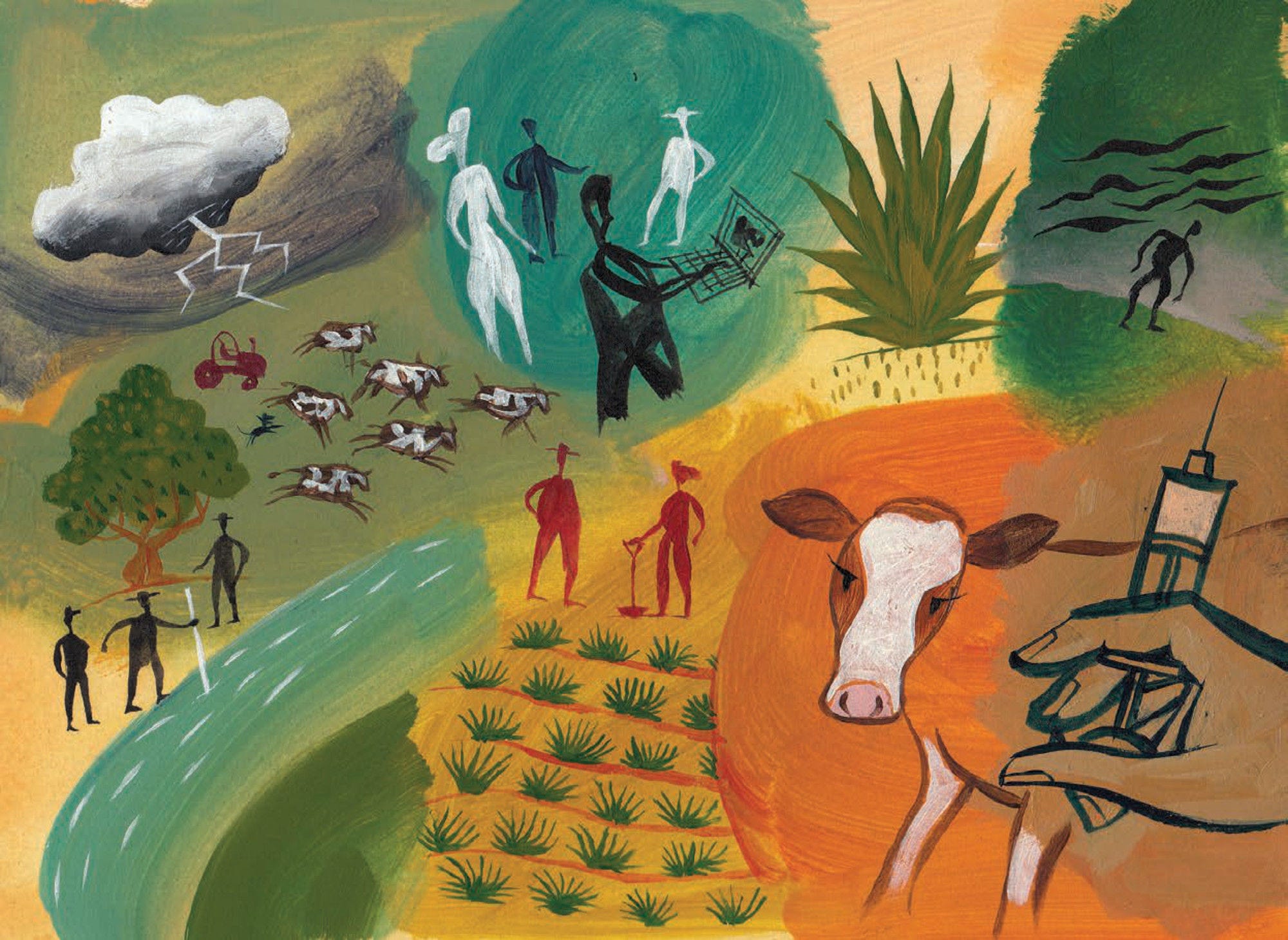This report explores how countries can strengthen the resilience of their agricultural sectors to multiple risks. A shifting risk landscape in agriculture – due to increasing weather variability, natural hazards, pests and diseases, and market shocks – will require public and private actors to consider the risk landscape over the long term, place a greater emphasis on what can be done ex ante to reduce risk exposure and increase preparedness, and prioritise investments that build resilience capacities both on-farm and for the sector as a whole. This report offers a framework for applying resilience thinking to risk management in agriculture, and explores how four OECD countries – Australia, Canada, Italy and the Netherlands – are mainstreaming resilience into their agricultural risk management policy frameworks.
Strengthening Agricultural Resilience in the Face of Multiple Risks

Abstract
Executive Summary
The agricultural risk landscape is shifting, with producers increasingly confronting new sources of risk caused by a changing climate, unanticipated changes in policy, or the economy-wide effects of shocks external to the agricultural sector, such as the global COVID-19 pandemic. Confronting this landscape will require disciplined application of an holistic risk management strategy – specifically, ensuring that decisions are no longer made from a paradigm of reactivity, but from a more proactive “resilience” perspective instead. This implies focusing on preparedness, with the goal of either reducing the negative impact of events, or significantly reducing the likelihood that those events occur.
An agricultural risk management approach based on resilience – defined as the ability to prepare and plan for, absorb, recover from, and more successfully adapt and transform in response to adverse events – emphasises the importance of planning and prevention, while also ensuring that farming systems remain flexible enough to respond to future uncertainty. The approach also stresses the importance of considering systems and not just individuals, which means taking into account the impacts that the risk management strategies of individual farmers have on the resilience of the food system as a whole.
Turning to agricultural risk management at the farm level, resilience can be considered as a form of human capital – decision-makers are able to take into account the entire risk landscape, consider the array of potential responses, and be aware of how those responses will affect their operations at different points in time. Farmers are called on to not only bounce back from negative events, but also to prevent and mitigate the impacts of shocks, as well as learn from them in order to adjust their practices with a view toward enhancing long-term sustainability. At the policy level, a resilience perspective means holistically considering the long-term implications of policies for the sector, taking preventative actions to mitigate the impacts of systemic risks where possible, and ensuring that producers have the tools necessary to build on-farm resilience, while considering the possible implications and trade-offs for the sector at large from risk management policies.
Cultivating resilience requires the development of three core capacities in the sector: the capacity to absorb the impact of an adverse event, the capacity to adapt in response to risk, and the capacity to transform with the intent of eliminating the risk altogether. There is a range of measures and actions that farmers, the private sector and government actors can take to build these capacities. The capacity of the agricultural sector to absorb risk can be enhanced through measures and strategies that either reduce the initial impact of a shock or else shorten the time taken to recover from it. The capacity of the agricultural sector to adapt can be enhanced by measures that address information gaps that prevent farmers from making optimal decisions in the face of a changing risk environment; by support for investments in research and building human capital; and by facilitating networks for both vertical and horizontal knowledge exchange. The capacity of the agricultural sector to transform in response to a changing risk environment can be enhanced by many of the same measures that build the sector’s capacity to adapt. However, it also requires stakeholders to engage in more long-term thinking, including placing additional emphasis on collaboratively planning and providing incentives for transformation.
The OECD has found that an efficient and effective policy approach for risk management in agriculture will take into account the interactions and trade-offs between different risks, on-farm strategies and government policies, and offer differentiated responses to different types of risk. It defines the broad areas of responsibility for governments and farmers, and the opportunity to transfer risk through market tools by distinguishing normal business risks (to be borne and managed by farmers) from larger but less frequent risks requiring market solutions (such as insurance systems and futures markets) and comparatively rarer catastrophic risks requiring public intervention.
Applying a resilience lens to this framework requires public and private actors to consider the risk landscape over the long term, place a greater emphasis on what can be done ex ante to reduce risk exposure and increase preparedness, and prioritise investments that build resilience capacities both on-farm and for the sector as a whole. It also places a greater emphasis on the processes through which agricultural risk management policies and strategies are developed. Specifically, five new dimensions are proposed to enhance the holistic framework for risk management in agriculture:
Time frame: Public and private actors should consider the risk landscape over a long-term time frame, place a greater emphasis on what can be done ex ante to reduce risk exposure, and plan and prepare for possible risks. Consequently, risk management frameworks should place more focus on ex ante policies and prevention.
Trade-offs: Different risk management strategies, policies and investments entail trade-offs both between the interests of different stakeholders, as well as between the capacities of the sector to absorb, adapt, and transform. Stakeholders should deliberately analyse and weigh potential future outcomes under different policy approaches.
Participatory collaborative processes: Participatory processes involving a wide range of stakeholders are key to the development of new policy approaches and frameworks to ensure that all stakeholders share a common understanding of the risk landscape and their respective responsibilities for managing risk. As such, there should be greater emphasis on co-ordination and the use of a collaborative approach to define strategies and boundaries between the different risk layers, and to designate responsibilities for managing risk.
Investments in on-farm resilience capacity: On-farm strategies, and the individual farmer’s overall capacity to manage risk, can play a critical role in reducing risk exposure to catastrophic events, particularly over the long-term. For this reason, risk management frameworks should encourage farmers to develop entrepreneurial skills and their human capital more broadly, as well as promote or support the uptake of resilience-enhancing practices or technologies.
No-regret policies: Public goods and no-regret policies are integral to agricultural risk management. Accordingly, more focus is needed on policies and investments in key capacities that build agricultural sector resilience to risk under a wide range of future scenarios and contribute to agricultural productivity and sustainability, which are of benefit even in the absence of a shock.
These ideas are already being mainstreamed into some countries’ existing agricultural risk management policy frameworks, but are rarely considered together as part of a holistic strategy to improve sector resilience. Specific case studies on resilience to drought in Australia, natural disasters in Canada, and animal and plant health risks in Italy and the Netherlands, provide both concrete examples of how countries are conceptualising resilience, as well as illustrations of how existing policy frameworks continue to address the different capacities as unrelated components. Often, policy responses in these countries have provided disproportionate resources to enhancing the sector’s capacity to absorb risks, to the detriment of its capacity to adapt and transform in response to those risks.
Related publications
-
 Working paper5 April 2019
Working paper5 April 2019






